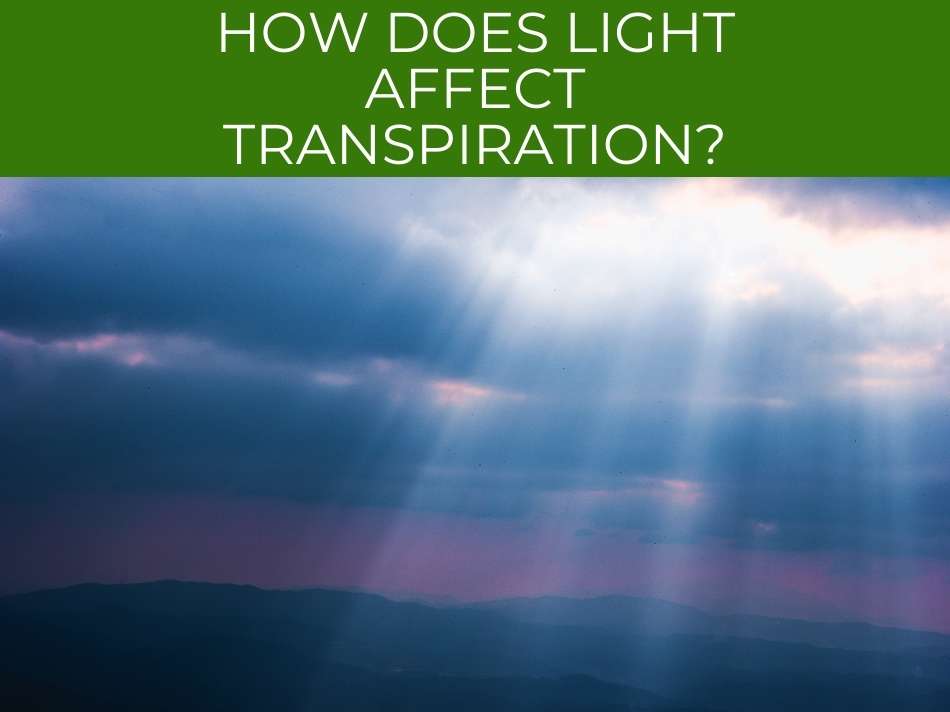Just like we release water when we sweat, plants transpire, releasing water vapor–which is called transpiration. This sounds like a simple process, but there are things that affect transpiration, including the amount of available light.
Light affects transpiration because plants use light for photosynthesis. When there is light available, a plant will open the pores that absorb the light. These are the same pores through which water vapor escapes, so transpiration increases.
The amount we sweat is affected by the temperature, humidity, and wind around us. These are also factors that affect transpiration in plants. Read on to understand how these and light affect the speed at which water vapor escapes from a plant.
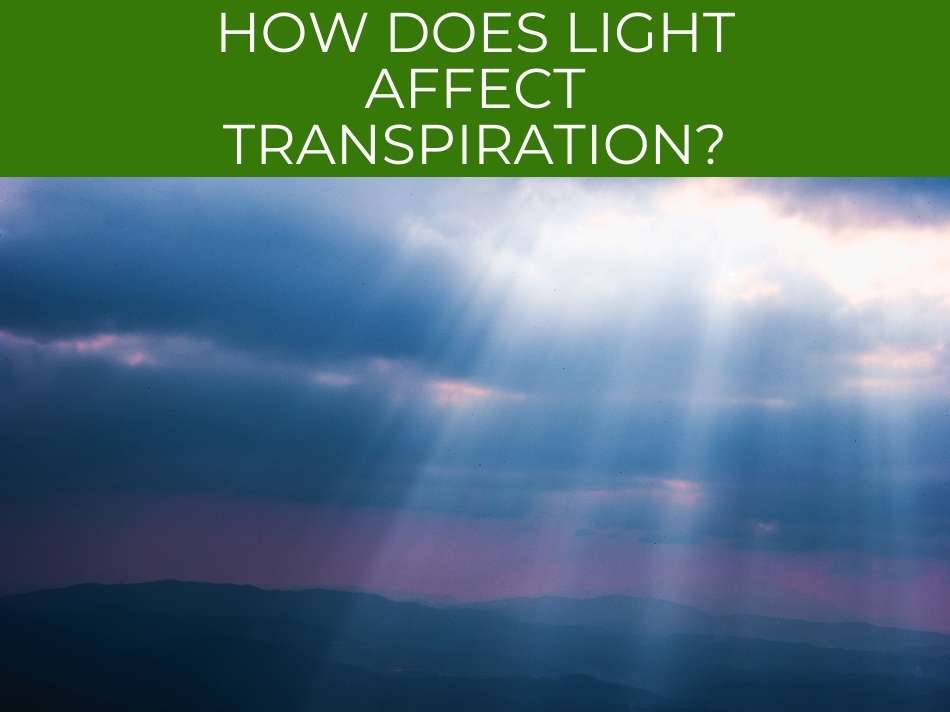
How does light affect transpiration?
More light available to a plant means that the stomata are opened wider, which also allows water vapor to diffuse at a faster rate, increasing the rate of transpiration. With more light means, temperature increases, which allows more water vapor escapes, & transpiration increases.
Higher levels and intensity of light mean that the guard cells will open the stomata wider, to take in more light to increase photosynthesis and stimulate more growth.
As the stomata open wider, they also allow more water vapor to escape, which increases the gradient along which the water vapor flows in the plant
More water vapor escapes and the rate of transpiration increases.
More light means a higher temperature and the air can hold more water vapor.
The guard cells sense this and open the stomata wider.
Water flows more quickly in the plant and more water vapor escapes, increasing transpiration.
When there is less light available and the temperature is lower, the guard cells will only open the stomata a bit, which means that less water vapor can escape and transpiration decreases.
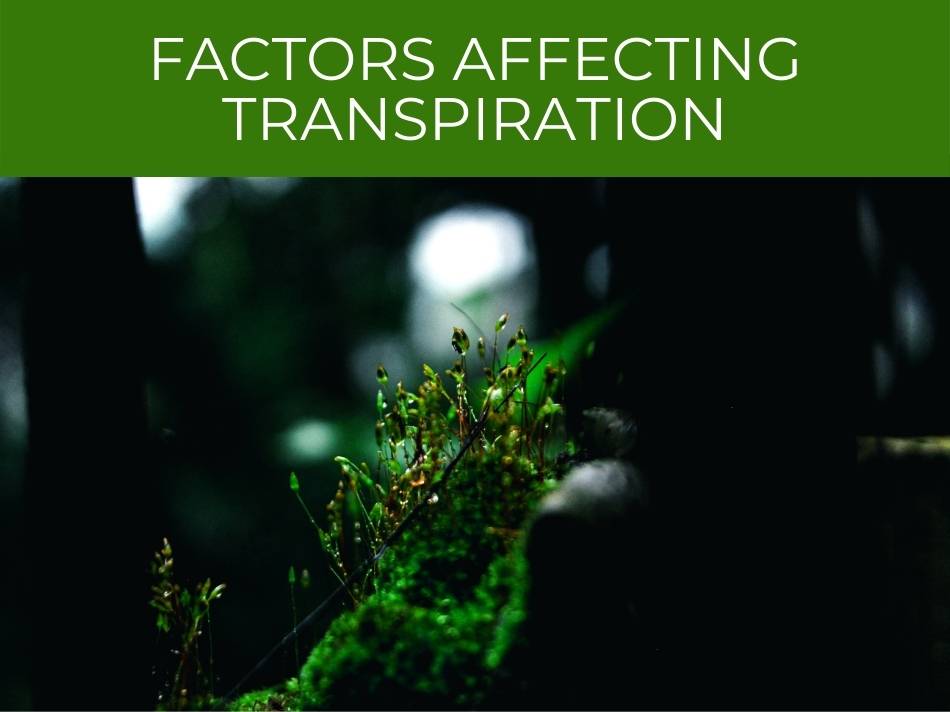
Factors affecting transpiration
The 4 factors affecting transpiration are temperature, humidity, wind, and light intensity. Effectively, each has an effect on the way the guard cells control the stomata, which then affects the amount of water vapor that can diffuse from the plant.

Temperature
Warmer air has the capacity to hold more water vapor and the dryness attracts water vapor from the plant.
The guard cells open the stomata on the surface of the leaves wider, so more water vapor can be released into the air, increasing the rate of transpiration.,
Find out why leaves are important.
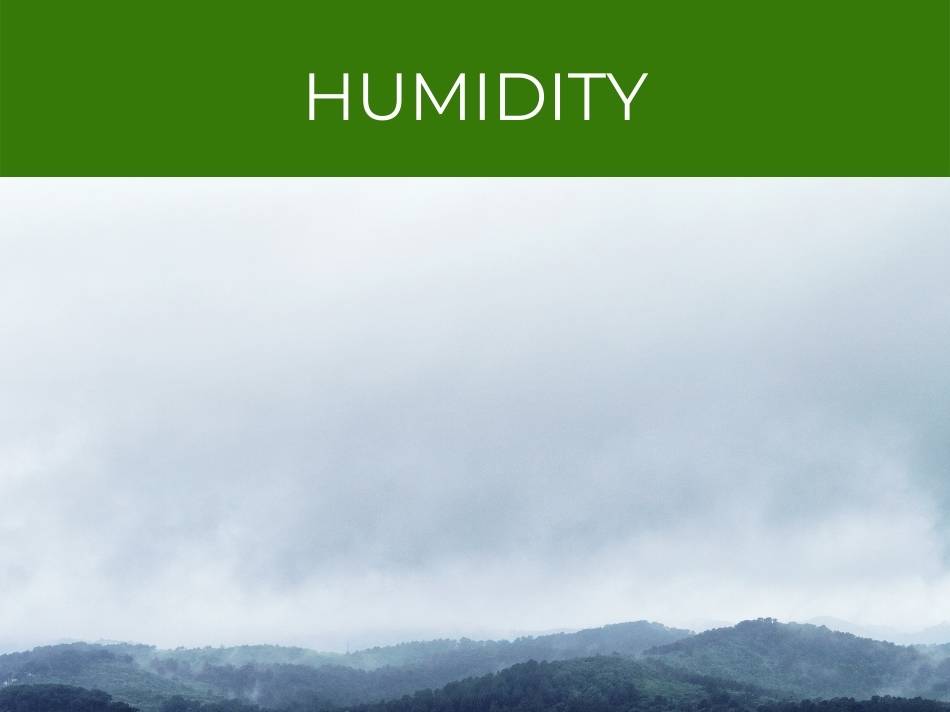
Humidity
Humidity refers to the amount of water vapor the air can hold in relation to the maximum it can hold at one time.
With a higher level of humidity, the gradient that water from the plant flows down is less steep and less water vapor can diffuse from the plant and the rate of transpiration is lower.
When the humidity is lower, the gradient along which the water travels in the plant is steeper, and more water vapor escapes.

Wind
The boundary layer is a thin covering of water vapor on the leaf through which the water vapor diffuses.
When wind moves a plant, it removes this boundary layer.
The epidermis of the leaf is thus more exposed to the air and the water vapor can move more quickly into the air, which increases the rate of transpiration.

Light
Light is an essential part of photosynthesis, used to convert water and carbon dioxide to glucose.
When there is more light, the guard cells open the stomata wider to allow more energy into the cells.
This means the stomata will allow more water vapor to escape from the plant, which increases the rate of transpiration.
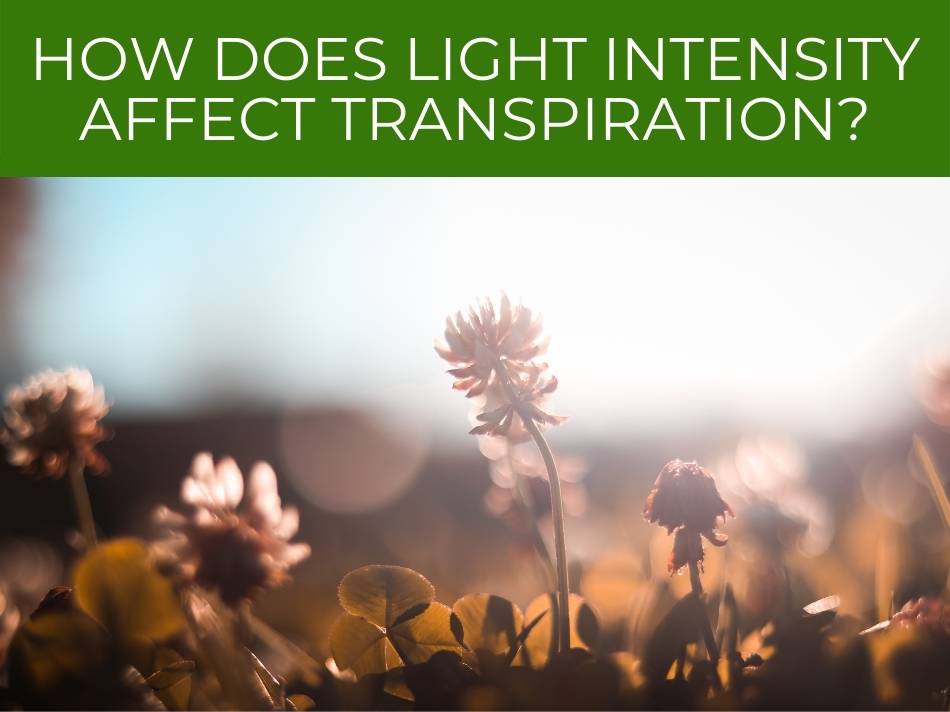
How does light intensity affect transpiration?
More intense light means more energy is available for photosynthesis, and the stomata open wider to absorb the light. As they open, more water vapor can diffuse, so the rate of transpiration increases.
When there is more intense light, available for photosynthesis, the guard cells open the stomata wider to absorb that light.
The open stomata also allow more water vapor to escape and increase transpiration.
Similarly, less intense light means that there is less energy for photosynthesis, so the stomata are not opened very wide, so less water vapor escapes.
Find out how plants contribute to the water cycle.
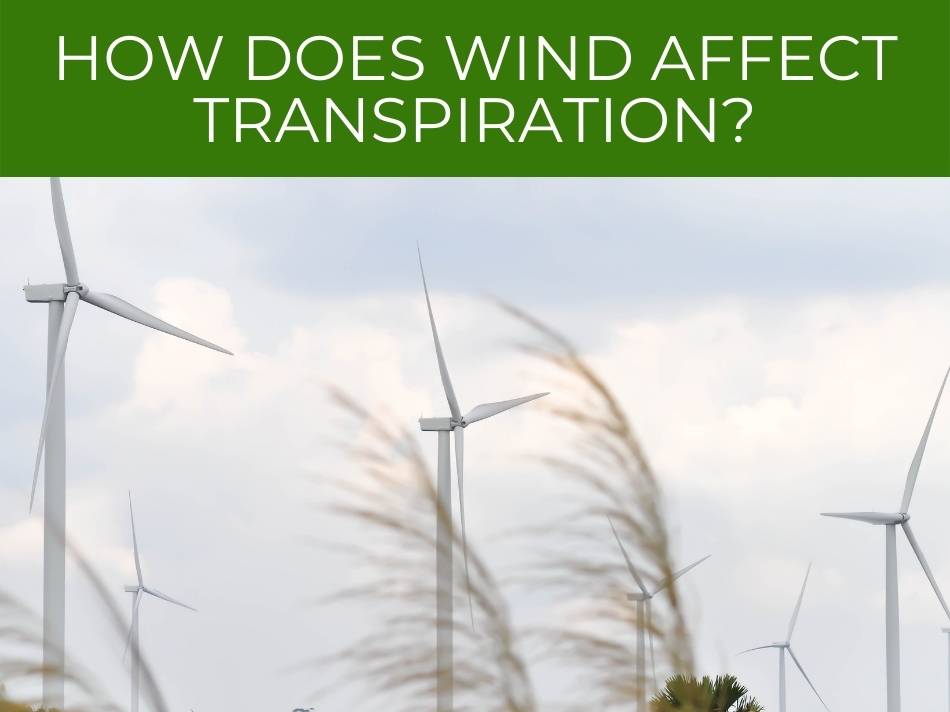
How does wind affect transpiration?
Wind affects transpiration because the boundary level of water vapor covering the leaf is removed when any wind moves over the plant. As a result, water vapor can move more quickly into the air, which increases the rate of transpiration.
The boundary level is a very thin level of water vapor that covers the leaves, through which the water vapor diffuses into the atmosphere.
As long as the plant stays still, the boundary layer remains.
When wind moves the leaves of a plant, the boundary layer also moves away.
The water vapor no longer has to diffuse through layers, but can move directly into the atmosphere.
The drier leaves also attract more water from within the plant.
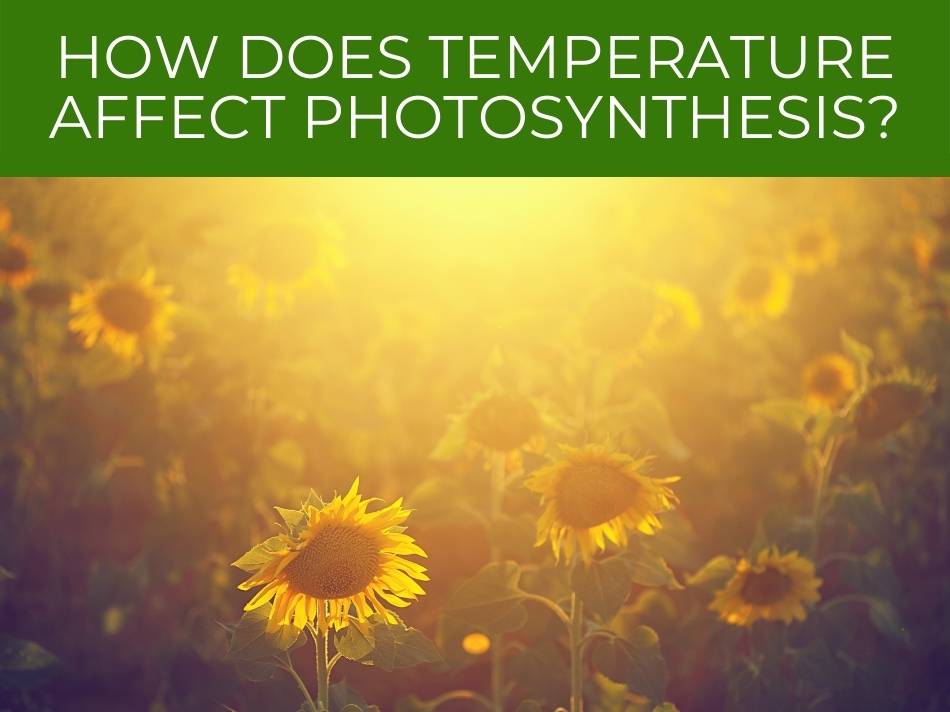
How does temperature affect photosynthesis?
Temperature affects photosynthesis through the stomata. With higher temperature, water moves more quickly to the outside of the plant, causing the stomata to open. This causes the plant to absorb more carbon dioxide. The increased CO2 increases the rate of photosynthesis.
In lower temperatures, the rate of transpiration decreases, which means the stomata only open minimally, so less carbon dioxide and sunlight enter the plant and photosynthesis decreases.
In higher temperatures, the air has the capacity to hold more water, which means that a greater amount of water vapor will move more readily to the outside.
To accommodate this, the guard cells open the stomata wider, allowing more sunlight and carbon dioxide into the plant, which is important for photosynthesis.
Photosynthesis is the process that produces food for a plant.
With the energy from the sun, the carbon dioxide and water molecules are broken down to produce glucose, the form of energy the plant needs to grow.
An increased amount of sunlight energy will increase the rate of photosynthesis.
In lower temperatures, the air capacity of the air to hold water is lower overall.
This means that less water will diffuse from the plant and transpiration is lower.
The stomata don’t open as wide, which means less carbon dioxide and sunlight can enter the plant and the rate of photosynthesis decreases.
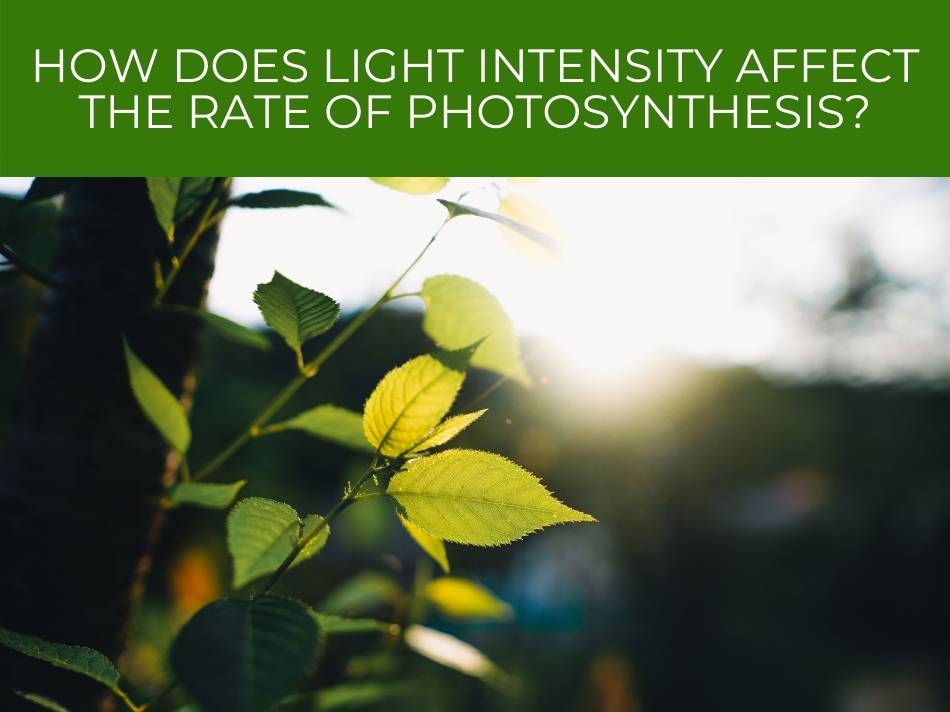
How does light intensity affect the rate of photosynthesis?
Light intensity directly affects the rate of photosynthesis. An increase in light intensity stimulates the stomata to open wider, which allows carbon dioxide and sunlight energy to be taken in by the plant which increases the rate of photosynthesis.
One of the essential inputs of photosynthesis is light, which provides the energy for the process to take place.
When a plant senses that there is more light available, the guard cells open the stomata wider for longer to allow more light to be absorbed.
As the stomata open, more carbon dioxide is taken in.
Carbon dioxide and water are the essential components of photosynthesis.
With more carbon dioxide, more water, and more sunlight, the rate of photosynthesis increases and the plant will grow more quickly.
Find out what the inputs of photosynthesis are.
Can plant growth be increased by increasing the brightness of the light?
Plant growth can be increased with brighter light & longer duration of light. Photosynthesis is the process that helps a plant to grow, using the energy from sunlight. Increased sunlight means that photosynthesis can happen more efficiently, which helps a plant to grow.
Photosynthesis is the process by which a plant uses light energy to convert water and carbon dioxide into food.
More light means more energy for the process.
Thus, increasing the brightness of light will give the plant more energy for photosynthesis and the plant will grow more quickly and become stronger.
Conclusion
There is more to sunlight than just providing the energy for plants to make food. It can also affect the rate at which water vapor escapes from a plant. The processes of transpiration and photosynthesis work together for a plant to grow.

